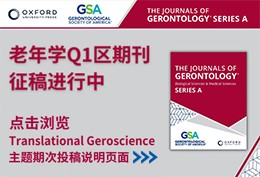当前位置:
X-MOL 学术
›
Water Res.
›
论文详情
Our official English website, www.x-mol.net, welcomes your
feedback! (Note: you will need to create a separate account there.)
Use of gas chromatography–mass spectrometry–olfactometry and a conventional flask test to identify off-flavor compounds generated from phenylalanine during chlorination of drinking water
Water Research ( IF 12.4 ) Pub Date : 2017-08-30 , DOI: 10.1016/j.watres.2017.08.063 Taku Matsushita 1 , Miki Sakuma 1 , Shiori Tazawa 1 , Taiki Hatase 1 , Nobutaka Shirasaki 1 , Yoshihiko Matsui 1
Water Research ( IF 12.4 ) Pub Date : 2017-08-30 , DOI: 10.1016/j.watres.2017.08.063 Taku Matsushita 1 , Miki Sakuma 1 , Shiori Tazawa 1 , Taiki Hatase 1 , Nobutaka Shirasaki 1 , Yoshihiko Matsui 1
Affiliation

|
Off-flavor in drinking water can be caused by transformation products (TPs) generated from organic compounds, such as amino acids, present during chlorination. However, the contributions of many of these TPs to overall off-flavor have not been quantified, mainly because the lack of appropriate chemical standards prevents sensory evaluation by means of a conventional flask test. In the present study, we used gas chromatography–mass spectrometry–olfactometry (GC-MS-O) to identify compounds responsible for the off-flavor generated by chlorination of an aqueous solution of the amino acid phenylalanine, and we propose a sensory evaluation procedure for quantification of the contributions of the identified TPs to the overall off-flavor, regardless of the availability of chemical standards of the TPs. GC-MS-O revealed that two TPs, N-chlorophenylacetaldimine and 2-chloro-2-phenylacetaldehyde, for which chemical standards are not commercially available, were the main components responsible for the off-flavor of the chlorinated solution. By using a sensory evaluation procedure involving a combination of GC-MS-O and a conventional flask test, we quantified the contributions of TPs to the overall off-flavor of the chlorinated solution. Approximately 60% of the off-flavor was attributable to free chlorine (13%), 2-chloro-2-phenylacetaldehyde (13%), trichloramine (12%) phenylacetaldehyde (11%) phenylacetonitrile (8%), and N-chlorophenylacetaldimine (2%). Treatment with powdered activated carbon (PAC) removed the off-flavor. Experiments with chlorination of 15N-labeled phenylalanine suggested that PAC reductively decomposed trichloramine into N2 gas and adsorbed all of the other identified TPs. Superfine PAC (median diameter, 0.7 μm) removed the off-flavor more rapidly than normal-size PAC (median diameter, 8.0 μm).
更新日期:2017-08-30















 京公网安备 11010802027423号
京公网安备 11010802027423号